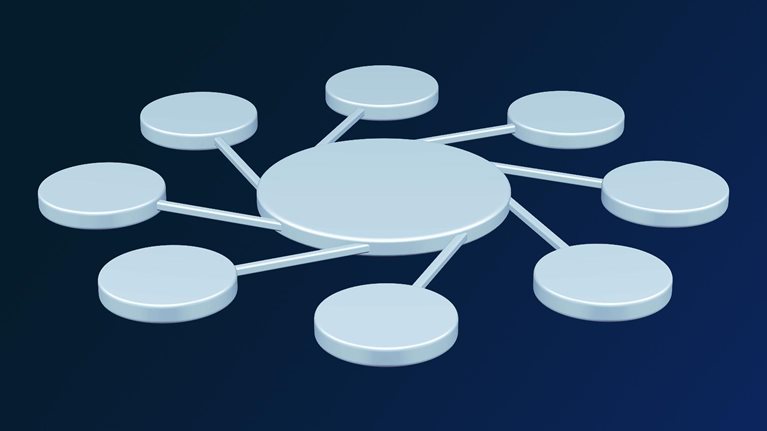Like most US states, Virginia has seen its unemployment rate rise dramatically during the COVID-19 pandemic. Continued unemployment claims rose from just more than 20,000 per week in mid-March 2020 to nearly 300,000 per week a month later, and they have hovered above 300,000 since the last week of April.
For Virginia-native Glenn Youngkin, co-CEO of Carlyle Investment Management (Carlyle) since January 2018, that problem was too great to ignore. In April 2020, he and his wife, Suzanne, founded the Virginia Ready Initiative (VA Ready), a not-for-profit organization that helps out-of-work Virginians get training for in-demand jobs in technology, healthcare, and other sectors so that they can get back to work quickly.
During a recent conversation with McKinsey’s Rodney Zemmel, Youngkin described how he and others took the idea of a “high-impact initiative that addresses the here and now in the state” and made it a reality—an experience that influenced his thinking about what he will do after he retires from his Carlyle post on September 30 of this year. An edited version of Youngkin’s remarks follows.
Virginia’s economy, before and during the pandemic
A lot of the reasons why Virginia’s suffering economically today could be seen six or nine months ago. If you’d looked at the Virginia economy then, you’d have seen a number of elements: a high-growth tech industry, a growing healthcare sector, and an established manufacturing presence around the marine industry, particularly shipbuilding and ship repair. We also have a large and vibrant tourism industry, with hospitality, restaurants, and entertainment.
Over the last number of years, one of the bigger issues in Virginia has been the availability of talent. Given a strong economy with low unemployment, the big topic for many employers was how to strategically design workforce-development programs to have a steady flow of talent in order to grow and expand. That was an enormous problem up until March.
When the country had to effectively shut down, the economic devastation that came with that was seen by most as short term. But what really has happened is a long-term structural shift, particularly in employment. We saw massive layoffs, particularly in sectors that are economically exposed across the country—hospitality, travel, hotels, restaurants, entertainment. Those sectors, which account for about 13 percent of the overall US economy, effectively closed. As a result, employment in those sectors was turned off.
Virginia had the exact same problem. It was not shielded at all. From January until today, over one million Virginians [in a population of 8.5 million] have filed for unemployment. That is more new filings for unemployment benefits than in the five-year period running up to 2019.
It’s my view that the economy is going to be much slower to recover than we all wish. It will be in fits and starts. We’re going to have flare-ups and moments where we have to retreat a little bit to manage potential future waves of COVID-19. Most of these jobs, while they may come back on a temporary basis, are incredibly exposed. They’re going to fluctuate. This is an absolute disaster, from a full-time-employment standpoint, for our country and for Virginia—to have huge numbers of people who realistically are not going to see dependable full-time employment for a long time.
An accelerated plan to help
About 80 percent of the newly unemployed folks do not have a college degree. They work in sectors that are the most economically exposed. And they are disproportionately racial and ethnic minorities. We have a vibrant group of workers in Virginia who actually want jobs, and yet jobs in those exposed sectors aren’t there for them. Suzanne [Youngkin] and I felt there was a chance to study and act quickly on the idea of retraining people. We also discovered in our research that there are sectors with supply–demand gaps for employees. Those sectors are looking to hire people, and yet we have record levels of unemployment.
So it was a simple connection: there are businesses that want to hire people and a massive amount of folks who are unemployed. How could we connect those two? That’s how we began to think about VA Ready: How do we put together a coalition of businesses and community colleges and funding to retrain people for jobs that are in demand in sectors that are growing? If you can do that, then a large part of our workforce that’s exposed economically can have careers in sectors that are much more economically resilient.
We began to put together the pieces. Let’s get businesses to think about whether they can hire folks. Let’s work with the community colleges and see what training programs already exist so we don’t have to create anything new. Virginia has a program already up and running that partially funds the tuition for these short-term training programs. That combination of elements enabled us to move very quickly, not to create a bunch of new things, but instead to bring together existing pieces that work.
We felt compelled to move as quickly as we could toward launch. Most of the training programs run about ten to 12 weeks. If folks start in August and come out with their credentials 12 weeks later, that will be around when many of the employers had suggested that they will feel more certain of how many people they can hire. What we did with digital tools in a remote-working environment—design a website and stand it up in almost no time, have videoconferences with senior executives where we cover a lot of ground, and so on—was stunning. The program actually launched about ten weeks from the day we started building it.
So it was a simple connection: there are businesses that want to hire people and a massive amount of folks who are unemployed. How could we connect those two?
Cross-sector collaboration
Our goal is to retrain between 10,000 and 15,000 people over the next 24 months. We had 20 of the leading businesses across the commonwealth, in manufacturing, healthcare, and technology, partner with us. We partnered with the Virginia Community Colleges system, which has 23 community colleges across the state. We worked with 35 companies and mapped their demand for particular occupations, which led to a supply–demand equation for around 19 occupations, with about 30 types of credentials, to focus on. Then we made sure that those credentialing programs were being run and could handle an increase in demand across the community-college system.
We also will put together the HR executives from our business partners and the academic leads from the community-college system so that we can dynamically evolve curriculum along the way. We’ve found a real appetite from businesses to say, “You know, if you had a little more of this and a little less of that, then the nursing assistant would be more applicable to what I’m doing.” Or, “the AWS-cloud-practitioner credential would be more applicable to what I’m doing.” The community colleges are so receptive to that, and—particularly in these training programs, which are nondegree programs—they can evolve the curriculum very quickly. They just need input.
Then we studied the support program FastForward that the Virginia state government was running. We recognized that it had been well designed; it just didn’t have any business partners in it. It pays two-thirds of the tuition for these credentialing programs. The programs average about $2,500, so roughly $1,600 is paid for by the state, and the student is responsible for paying $800 or $900. VA Ready will award each person who completes their credential a $1,000 credential-achievement award, so if they’ve had to go out of pocket, then it’s covered. Most of the students will be able to find grants and foundation support for that last third of the education cost, so this $1,000 incentive is like a signing bonus when somebody gets a new job.
The applicant’s journey
Two weeks in, we’ve had 10,000 people come to the website and more than 1,000 people start the process. The process is pretty straightforward. There’s only one requirement: you’re unemployed. You pick your focus area and go to your local community college and enroll. And they have workforce counselors at both the FastForward program and the community colleges. Again, we didn’t have to create anything new; we just drive people to existing resources.
The applicants work with the workforce-development folks and the counseling folks. You decide, “Well, I’d like to be in the healthcare sector, and I’d really like to be a medical assistant.” You get a list of the places where the medical-assistant program is being run. You enroll. You also then enroll in FastForward. It happens at one time.
Then you come back to the VA Ready website and let us know what program you’re enrolled in, at what community college, and agree that you’re going to participate in the support options so that you can get ready to get a job. And when you show us that you’ve got your credential, you’ll receive your credential-achievement award.
We’ll also have a job exchange on our website, and all of our business partners are going to post jobs. Now they’re not going to be able to promise people jobs, but they can at least give them a priority interview. In addition, we’re working with various support organizations to provide students with basic things, like childcare, carpools, and advice on how to write a résumé and what to wear to an interview.
Hearing the call
VA Ready was one of the primary catalysts in my thinking about retirement from Carlyle. Even before the COVID-19 pandemic, I had been feeling that I was called to do something for my state and, hopefully, the country, and I was trying to figure out what in the world that meant. Then, when the COVID-19 crisis hit and VA Ready got cooking, I had to ask: If we were able to do this with a very modest amount of my time and lots of good people, what could happen if I did this kind of work full time? I felt compelled to step out of Carlyle in a way that would enable me, at least for now, to do stuff like this full time. Because my state needs it. Our country needs a lot of attention.
Comments and opinions expressed by interviewees are their own and do not represent or reflect opinion, policy, position, or endorsement of or by McKinsey.


